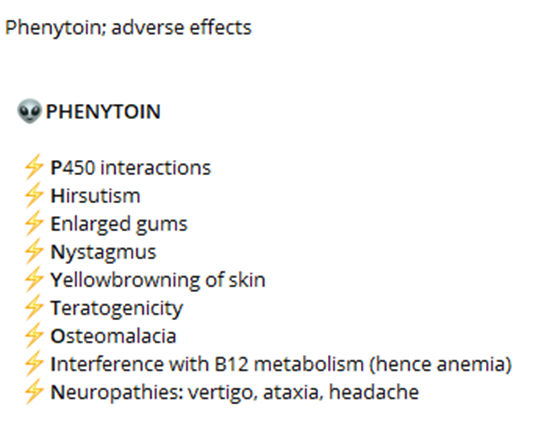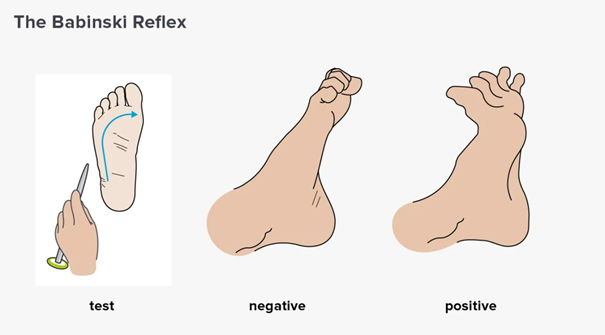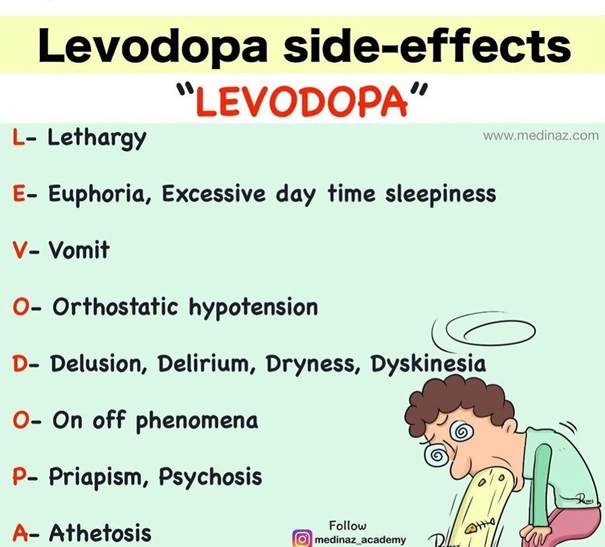A nurse is reinforcing teaching a client who has a new prescription for phenytoin. The nurse should instruct the client to monitor and report which of the following adverse effects of this medication?
Diarrhea
Wrist pain
Skin rash
Metallic taste
The Correct Answer is C
A. Diarrhea:
Diarrhea is not a common side effect of phenytoin. While gastrointestinal disturbances such as nausea, vomiting, and constipation may occur, diarrhea is less common. Therefore, it is not a primary adverse effect that the nurse should instruct the client to monitor and report.
B. Wrist pain:
Wrist pain is not a common side effect of phenytoin. Side effects related to musculoskeletal issues such as joint pain, muscle weakness, or muscle twitching can occur, but wrist pain specifically is not commonly associated with phenytoin use. Therefore, it is not a primary adverse effect that the nurse should instruct the client to monitor and report.
C. Skin rash:
Skin rash is a potential adverse effect of phenytoin that should be monitored and reported. Phenytoin can cause various skin reactions, including a mild rash or more severe reactions such as Stevens-Johnson syndrome or toxic epidermal necrolysis. Therefore, the nurse should instruct the client to promptly report any signs of skin rash or other skin changes.
D. Metallic taste:
Metallic taste is a common side effect of phenytoin. While it is not usually a serious adverse effect, it can be bothersome for some individuals. Therefore, the nurse should instruct the client to monitor for this side effect and report it if it occurs persistently or becomes bothersome.

Nursing Test Bank
Naxlex Comprehensive Predictor Exams
Related Questions
Correct Answer is A
Explanation
A. Toes turning up and spreading:
This description corresponds to the abnormal finding in the Babinski reflex. In a positive Babinski sign, the big toe (hallux) dorsiflexes (turns upward) and the other toes fan out. This response is abnormal in adults but normal in infants up to a certain age.
B. Downward curl of the toes:
This response is typical of the normal plantar reflex, where the toes curl downward (plantar flexion) in response to stimulation of the sole of the foot. It is not indicative of the Babinski reflex.
C. Pain in the big toe:
Pain in the big toe is not a characteristic finding of the Babinski reflex. The Babinski sign is assessed by observing the movement pattern of the toes in response to stimulation, rather than eliciting pain.
D. Big toe bending upward:
The big toe bending upward, or dorsiflexion of the big toe, is a specific component of the positive Babinski sign. However, it is typically accompanied by spreading of the other toes, which is the hallmark feature of the Babinski reflex.

Correct Answer is A
Explanation
A. Orthostatic hypotension:
Orthostatic hypotension, a sudden drop in blood pressure when standing up, is a potential adverse effect of levodopa therapy. This can lead to dizziness and increase the risk of falls, thus supporting the nursing diagnosis Risk for Injury.
B. Nausea and vomiting:
Nausea and vomiting are common side effects of levodopa therapy. While they can cause discomfort and dehydration, they are less directly related to the risk of physical injury compared to orthostatic hypotension.
C. Anorexia and depression:
Anorexia (loss of appetite) and depression can occur as adverse effects of levodopa therapy. While they can affect the patient's overall well-being and quality of life, they are not directly associated with an increased risk of physical injury.
D. Tachycardia and palpitations:
Tachycardia (rapid heart rate) and palpitations are less common adverse effects of levodopa therapy. While they may indicate cardiovascular issues, they are not typically associated with a direct risk of physical injury.

Whether you are a student looking to ace your exams or a practicing nurse seeking to enhance your expertise , our nursing education contents will empower you with the confidence and competence to make a difference in the lives of patients and become a respected leader in the healthcare field.
Visit Naxlex, invest in your future and unlock endless possibilities with our unparalleled nursing education contents today
Report Wrong Answer on the Current Question
Do you disagree with the answer? If yes, what is your expected answer? Explain.
Kindly be descriptive with the issue you are facing.
